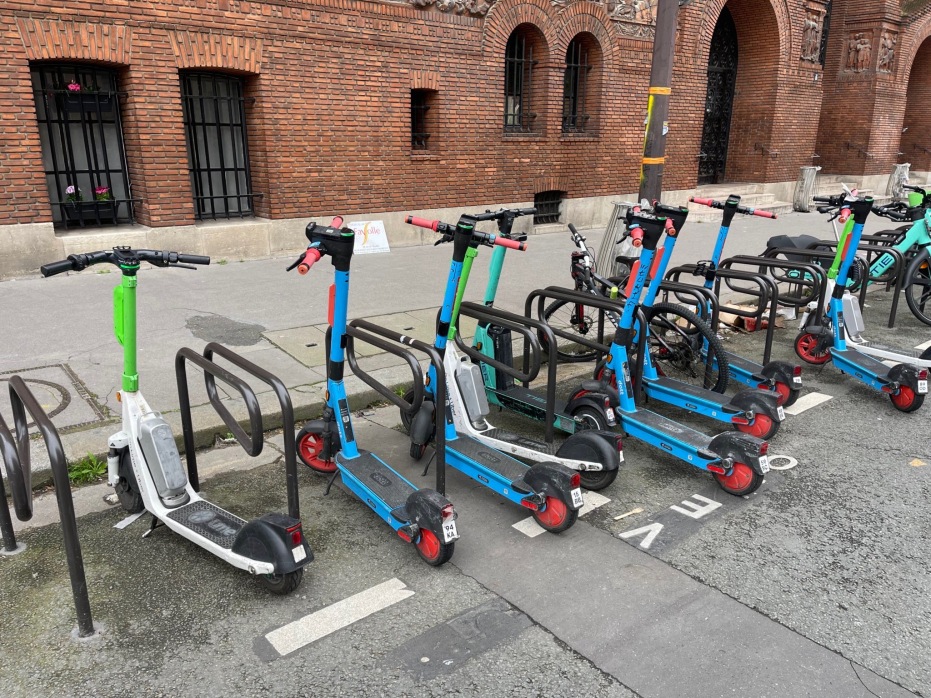Micromobility companies want more Americans to ditch their cars for emissions-free travel — and to make it happen, they say cities must adopt policies that will entice people to use electric scooters and bikes.
A coalition of representatives from the four major national e-scooter brands — Bird, Lime, Spin, and Superpedestrian — shared its best practices for deploying a fleet of micromobility devices at the National Association of City Transportation Officials' Designing Cities Conference in Denver on Monday, emphasizing policies that make devices easily available, easy to use, and easy to park near a destination for 24 hours a day.
“At the heart of our campaign, is the idea that some changes in life, though hard, are ultimately worth it and can make your life better,” said Christian Navarro, head of brand marketing at Lime, adding that scooter use is a great way “to alleviate the headaches of car ownership" and provide "a source of newness, freshness, and ... an exciting way to go about your day unburdened.”
The group says that having a large enough fleet in areas where people want to travel — specifically, a ratio of one vehicle per 500 people and a ratio of two operators for markets that offer between 1,000 to 2,000 scooters — encourages people to think twice about using their vehicles to make short trips.
Moreover, pilot of at least two years and a permanent contract of three to four years allows enough time for riders to adapt to using scooters in their area and for companies to invest more heavily in their programs. Communities with seasonal population changes like vacation communities or college campuses might require more devices at peak times.
“Eventually we want this to be boring,” a spokesperson for the four e-scooter companies said. “Scooters and bikes and whatever comes after that should be regular parts of the transportation system. You don’t talk about the safety risks of Vespas even though motorcycles and Vespas are far more dangerous than scooters. They’re just an ordinary piece of our streetscape.”
The companies must also make a profit in order to continue operations. Unlike most other transportation systems, micromobility companies are not subsidized by the government, and most actually pay cities permission fees to provide the service, as well as any fines for users who illegally park a device. (The scooter companies argued that ideally, those fees should be set at a fraction of rideshare vehicles that emit pollution, cause congestion, and put more stress on roads.)
Those costs, though, haven’t stopped some companies from hauling in revenue. Last year Lime earned $466 million in gross bookings and $15 million in earnings before taxes and depreciation costs.
Most importantly, the scooters and their routes must be safe to use. In order to ensure this, the groups pursued a joint commitment with public officials, city planners and transportation leaders to ensure scooters are considered a viable transportation mode when designing streets. That could include a 15-mile-per-hour speed limit for the devices to discourage riding on sidewalks, mandatory parking areas with dedicated scooter corrals, and recommending but not mandating helmets.
That said, a recent study from the Insurance Institute for Highway Safety found that low speed limits can spur riders to scoot on the sidewalk instead of the road. In Washington, DC, where shared scooters' top speeds are throttled at just 10 miles per hour, riders are 44 percent more likely to use the sidewalk than those in the communities where scooters are allowed to go twice that fast, like Austin, Texas.
“Our results show that restricting scooters to low speeds offers a trade-off,” said IIHS Vice President of research Jessica Cicchino, the study’s lead author. “At slow speeds, riders are more likely to choose the sidewalk over the road. That puts them in less danger from cars but could mean more conflicts with people on foot.”
As shared electric scooters and bikes become more popular, those sorts of sensitive policy considerations are becoming more urgent than ever. Americans took half a billion scooter and bike share rides since 2010 including 112 million trips in 2021 alone, according to a recent NACTO study.
Shared e-bike trips doubled from 9.5 million in 2018 to 17 million in 2021, and riders have been shifting towards using devices more frequently throughout the day instead of just during the morning rush, the study found. As of last summer, the country had 300 e-scooter systems and 45 dockless bike share systems, in addition to 61 docked bike share networks.
And the industry argues that demand for car-free transit options is only expected to continue. The North American electric scooter market could reach $15.4 billion with 3,182 units by 2029, according to one market estimate.
The micromobility surge, though, is not being adequately met with road design changes that users need. And rather than meet that challenge, some cities have simply banned the technology entirely.
When a vehicle driver struck and killed a scooter rider in Nashville in 2019, for instance, then-mayor David Briley sought to suspend a scooter pilot that had gained popularity among Music City riders. The city’s Metro Council rejected the ban, and Briley lost re-election a few months later; a new pilot program of seated scooters just launched in Nashville in March.
Scooter companies say that banning the devices is counterproductive and city leaders should work with companies to craft regulations that make roads safer in the long run.
“Cities have little control over their streets but the truth of the matter is, banning scooters because someone was killed by a car is the same as banning bicycles or walking because someone was killed by a car,” the spokesperson said. “We’ve done amazing work with cities using our data to identify the roads that are dangerous or where riders feel they are afraid so they can work on those locations and improve our infrastructure.”






